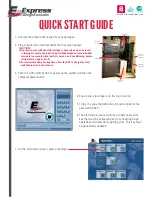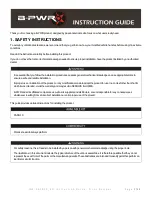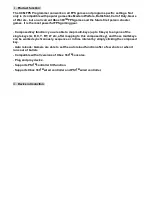
The aggressive level guarantees the maximum
security level. Nevertheless, in outdoor installations
with the sensor exposed to weather conditions, the
aggressive level generates false alarms when it
rains. Therefore, the aggressive level is
recommended for indoors or if the sensor is protected
from rain.
Note: with the masking signal level set to Disabled,
the sensor does not comply with standard EN
50131. The masking signal is automatically
disabled during the sensor initialization phase
(flashing blue LED).
Set the tolerance level for
animals
Tolerance for animals
The sensor can discriminate between motion by
people and pets or small animals (e.g.: mice, birds).
Tolerance level
The tolerance level of the sensor can be configured.
A low tolerance level guarantees a higher level of
security, but simultaneously increases the risk of
false alarms. It is suitable for scenarios where no
motion is allowed in the monitored area (e.g.: in a
museum).
A high tolerance level is suitable for outdoor
installations where the probability of false alarms
caused by animals or other moving objects is very
high.
An intermediate tolerance level ignores motion of a
pet, for example, but correctly signals motion of
people walking.
NOTICE: a person crawling or kneeling is
comparable to the dimensions of an animal for
the sensor. The tolerance level must be lowered
to detect people who are not standing up.
Set the level
homepage >
> Pet tolerance level
The tolerance for animals can be set in two ways:
l
at three levels: minimum, medium, maximum
l
fine tuning: a value from 0 to 100
The maximum tolerance level is the recommended
level to minimize outdoor false alarms.
The graphic illustrates how to set this value. The
following is an example where the sensor detects the
presence of a standing or kneeling person or a large
dog and signals an alarm, while smaller animals are
ignored.
Manage semi-static objects
Immunity to semi-static objects
Objects moving within the monitored area may
generate false alarms. If the objects oscillate or
move within a limited space (semi-static objects),
they can be recognized by the sensor and ignored.
Identification of semi-static
objects
A semi-static object [A] is identified through the
distance between the sensor and the start of the
object [B] and the distance between the sensor and
the end of the object [C].
It is possible to define a maximum security area near
the sensor [D], in which semi-static objects cannot
be configured.
NOTICE: configuration of semi-static objects
reduces the security level: in the area impacted
by the semi-static object, no motion is detected
while the semi-static object moves.
Note: for indoor installations, consider that the
motion of the semi-static object may create
projections on walls and/or reflective objects. If
necessary, set two semi-static objects: one for the
object and one for its projection on the wall.
Installation and use
MSK-101 | Advanced configuration manual v1.5 MAY 2018 | msk-101_advanced-config_en_wo v1.5 | © 2017-2018 Inxpect SpA
23
Содержание MSK-101
Страница 33: ......












































